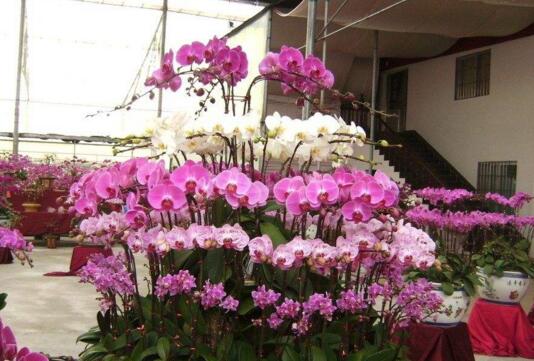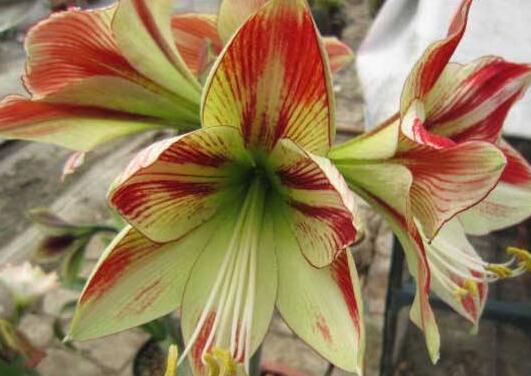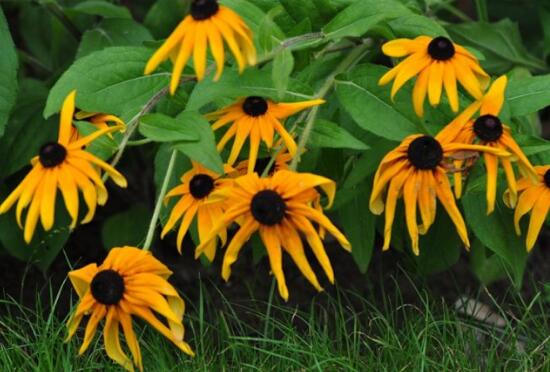What about the rotten roots of butterfly flowers? pruning / disinfecting / changing pots / three tricks to bring butterfly flowers back to life
When we raise butterfly flowers, if we water them improperly or there are germs in the soil, it may cause the roots of butterfly flowers to rot. This phenomenon is called rotting root phenomenon in botanical circles, and it will have a fatal effect on plant growth. What about the rotten roots of butterfly flowers? The editor teaches you three tricks to bring the butterfly flower back to life.
What about the rotten roots of butterfly flowers?

1. Cut off the rotten roots
Remove the plant from the pot, clean up the soil from the roots, and after washing with clean water, cut off the rotten roots to avoid infecting other roots. When pruning, you need to be careful not to hurt other parts of the roots to avoid root injuries.
2. Select soil
Re-select fertile, loose and healthy soil, if it is clayey soil, you can use plant ash to apply to the surface of the soil; if it is sandy soil, it may cause water to permeate too quickly, so when planting, the soil surface can be sprinkled with peat to relieve it properly.
3. Change the basin soil
If the butterfly flower not only has rotten roots, but also has withered and yellow leaves, it is most likely caused by diseases and insect pests, and the cause is that there are germs in the soil. How to do the rotten roots of butterfly flowers at this time? The roots should be disinfected first, such as soaking in potassium permanganate solution for 5-30 minutes, and then re-potting.
How to maintain butterfly flowers at ordinary times
1. Proper watering
When watering, neither too hard nor too little watering, the method can refer to the detailed description of how to water butterfly flowers, especially in the rainy season is to pay attention to drainage, if the water is too long, there will be rotting roots.
2. The temperature is moderate
Butterflies like a cool environment, so when the summer temperature is too high, it should be shaded and cooled properly, by moving it to a cool and ventilated place, or spraying water to the leaves to achieve a cooling effect.
3. Heat preservation in winter
Butterfly flowers are very resistant to cold, but they can also be frozen if the temperature is too low, so they should be moved to a warm interior in the north, and in the south, they can be covered with two layers of plastic film on the outside of the plant to achieve the effect of heat preservation.
4. Scientific fertilization
Fertilization can not only provide nutrients for the growth of butterfly flowers, but also improve its resistance to diseases, so that butterfly flowers have a stronger physique, can effectively avoid the occurrence of rotten roots, so scientific fertilization is very important.
What about the rotten roots of butterfly flowers? how to save and deal with them?
Butterfly flower is a common green herb, blooming at the turn of spring and summer. The butterfly orchid is very gorgeous and beautiful, and it is very suitable for breeding at home, and it is very good to plant a few at home, but it is often improper to deal with the breeding species, and the root rot phenomenon will appear in the butterfly flower, and the loss outweighs the gain if it is not dealt with in time. Here are the reasons for the rotten roots of butterfly orchids and how to deal with them.
Analysis on the causes of rotten root of butterfly flower 1. Rotten root of butterfly flower: potted soil selection
In the selection of basin soil, we should first choose a loose, aerated, permeable matrix. Such as peat mixed with perlite, peat mixed with pine needles, moss and so on. Use organic fertilizer as base fertilizer.
2. Rotten roots of butterfly flowers: properly watered
Keep the basin soil moist, but do not accumulate water, which is the main cause of rotten roots. Should pay attention to observation, after watering, can not seep down for a long time, indicating that the basin soil for a long time, increased density, should quickly change the soil, so as not to rot the root. Once the rotten root occurs, the basin soil can be knocked out and scattered, rinse the root with clean water, cut off the rotten root, and keep the intact part as far as possible.
What about the rotten roots of butterfly flowers?
Trim and disinfect, turn over the basin and change the soil, and clean the roots.
When the rotting root of the plant is serious, the following methods should be taken:
Remove the plant from the pot, clean up the soil of the root, then remove the rotten part of the root, soak the cut and the residual root with potassium permanganate solution for 10 minutes, dry, and then smear the cut with plant ash, you can put it back on the basin. The basin soil must be disinfected. It can be thoroughly watered with boiling water and used again after it is cooled.
When re-potting, press the rhizome, pour water thoroughly, put it in the shade, cover with a film, keep the temperature at about 20 ℃, and new roots can grow in about 20 days.
What about the rotten roots of butterfly flowers?
Treatment of rotten root of butterfly flower
Basin soil selection
In the selection of basin soil, we should first choose a loose, aerated, permeable matrix. Such as peat mixed with perlite, peat mixed with pine needles, moss and so on. Use organic fertilizer as base fertilizer.
Proper watering
Keep the basin soil moist, but do not accumulate water, which is the main cause of rotten roots. Should pay attention to observation, after watering, can not seep down for a long time, indicating that the basin soil for a long time, increased density, should quickly change the soil, so as not to rot the root. Once the rotten root occurs, the basin soil can be knocked out and scattered, rinse the root with clean water, cut off the rotten root, and keep the intact part as far as possible.
Trim and disinfect, turn over the basin and change the soil
When the rotting root of the plant is serious, the following methods should be taken:
Remove the plant from the pot, clean up the soil of the root, then remove the rotten part of the root, soak the cut and the residual root with potassium permanganate solution for 10 minutes, dry, and then smear the cut with plant ash, you can put it back on the basin. The basin soil must be disinfected. It can be thoroughly watered with boiling water and used again after it is cooled.
When re-potting, press the rhizome, pour water thoroughly, put it in the shade, cover with a film, keep the temperature at about 20 ℃, and new roots can grow in about 20 days.
- Prev

How to avoid yellow leaves, four ways to avoid yellow leaves do not bloom
Although there are not many leaves of amaryllis, people do not plant it for viewing leaves, but some flower friends encounter yellow leaves, which not only causes headaches but also affects plant growth and flowering. Let's look at the specific causes and solutions
- Next

How to do gerbera leaves yellowing, proper watering control fertilization/soil can not be too little
Gerbera, an ornamental plant, its beautiful flowers, bright colors are loved endless. In life, there are many people who raise gerbera, but novices often encounter yellowing of leaves when raising it, which not only affects viewing, but also dies seriously. What about yellowing of gerbera leaves?
Related
- Fuxing push coffee new agricultural production and marketing class: lack of small-scale processing plants
- Jujube rice field leisure farm deep ploughing Yilan for five years to create a space for organic food and play
- Nongyu Farm-A trial of organic papaya for brave women with advanced technology
- Four points for attention in the prevention and control of diseases and insect pests of edible fungi
- How to add nutrient solution to Edible Fungi
- Is there any good way to control edible fungus mites?
- Open Inoculation Technology of Edible Fungi
- Is there any clever way to use fertilizer for edible fungus in winter?
- What agents are used to kill the pathogens of edible fungi in the mushroom shed?
- Rapid drying of Edible Fungi

